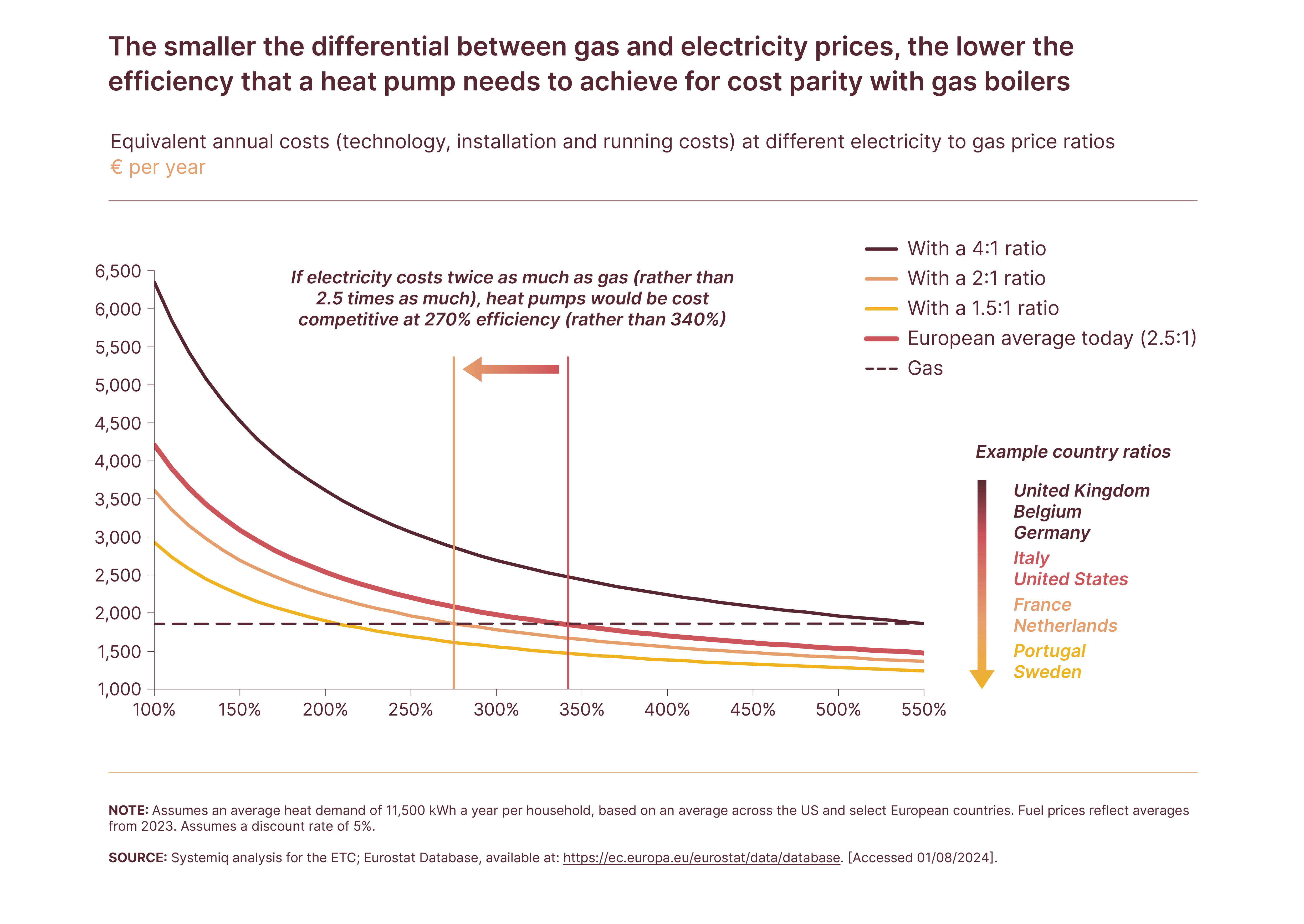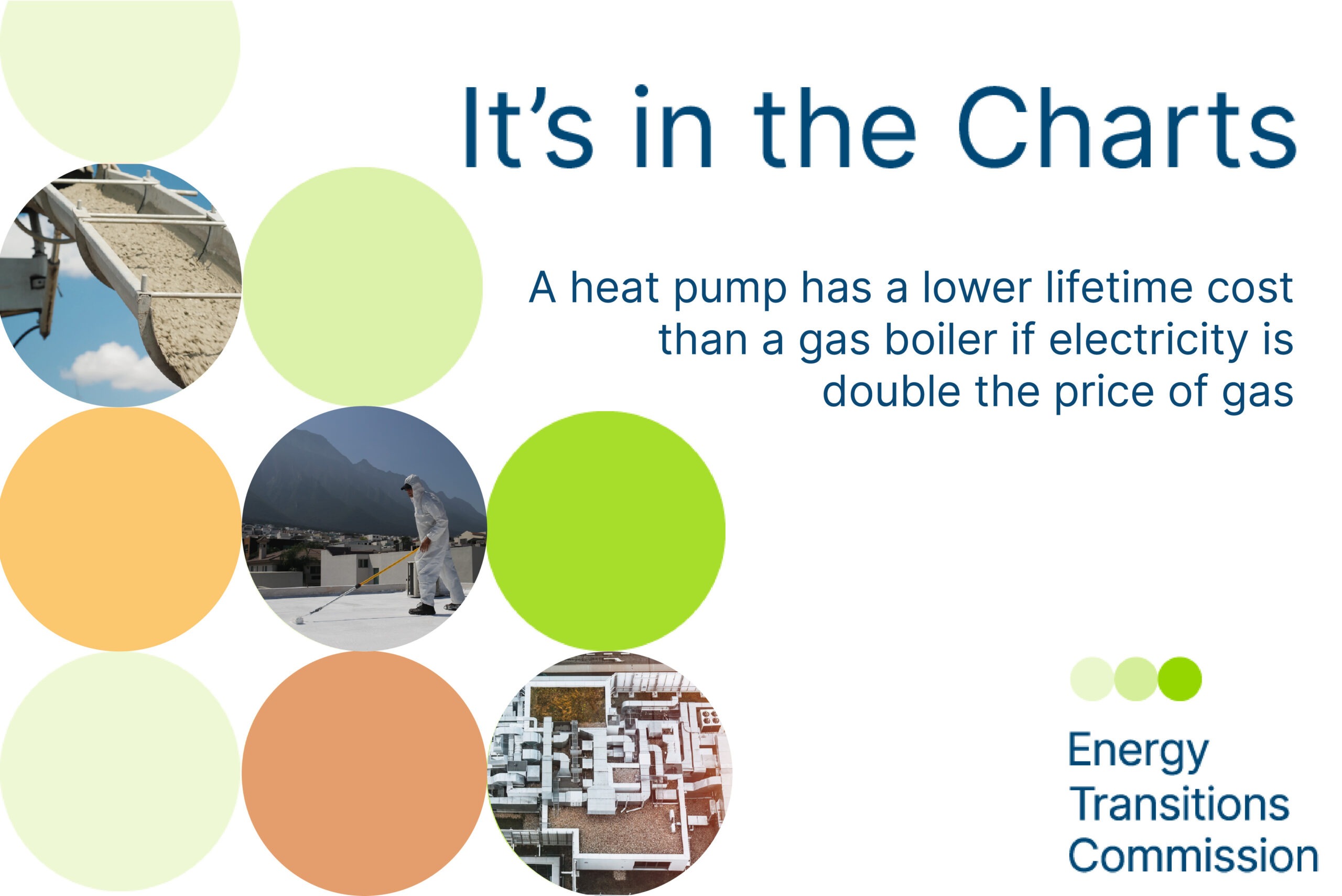This section highlights key graphs from our analysis, outlining the ETC’s positioning on key sustainability topics. Our charts are one of the many ways our thought leadership shapes debate around the complex subject of the energy transition. The chart below is from our report, Achieving Zero-Carbon Buildings: Electric, Efficient and Flexible.
A heat pump has a lower lifetime cost than a gas boiler if electricity is double the price of gas
Electric heat pumps are far more efficient than gas boilers and electric resistive heating because for each kWh of electricity input, they can output multiple kWhs of heat. The efficiency of heat pump varies depending on the difference between the outside and desired inside temperature, but they can typically achieve 300% efficiency today (i.e. 3 times more heat can be delivered per kWh of electricity), and ground source heat pumps can even reach over 500%.
If electricity and gas cost the same per kWh, a heat pump would be at least 3 times cheaper to run. However, in many countries – especially, the UK and Germany – this efficiency benefit goes unrealised because electricity costs 4 times more than gas.
On average across Europe, electricity costs 2.5 times more than gas. At this average ratio, a heat pump can breakeven with a gas boiler on a total cost of ownership basis (i.e. the cost of buying, installing and running) if it can achieve an average annual efficiency of 340% – this is not unfeasible today, but is at the upper end of what is currently technically possible. However, if electricity-to-gas price ratios fall slightly to 2:1 – currently seen in France and the Netherlands – heat pumps are competitive at efficiencies of just 270% – the kind of efficiency seen in practice in many heat pumps today.

There are several ways that policymakers can rebalance electricity and gas prices. For example:
- Policymakers could shift environmental levies that are charged on electricity bills (a legacy from when electricity was generated from higher-carbon sources such as coal) to gas or to general taxation. This must gradually occur to prevent disproportionate impacts on lower-income households who will, in general, need longer to electrify their heating.
- Governments could also take a more targeted approach by offering relief on electricity used for space heating. Since 2021, Denmark has applied a lower tax rate to electricity used for heating, while taxes on existing electricity consumption remain the same.
- A carbon price for fossil fuel consumption, such as in the Emissions Trading System (ETS2) in Europe, which puts a cost on greenhouse gases emissions from electricity and heat generation and other energy intensive sectors. The ETS2 is a revision of the current ETS that will become fully operational in 2027 and will require fuel suppliers to buildings, road transport and some additional sectors to monitor and report their emissions as well.
- Appropriate power market design can ensure wholesale and retail electricity prices better reflect lower cost renewables (e.g., by reducing the frequency of gas setting marginal prices), and a rapid scale up of renewable generation and grid upgrades to ensure clean power supply keeps pace with electricity demand.
This chart is from our 2025 report, Achieving Zero-Carbon Buildings: Electric, Efficient and Flexible.
If you would like to reproduce this chart, please let us know.
Interested in receiving these insights in your inbox? Click here to sign up for our mailing list.


